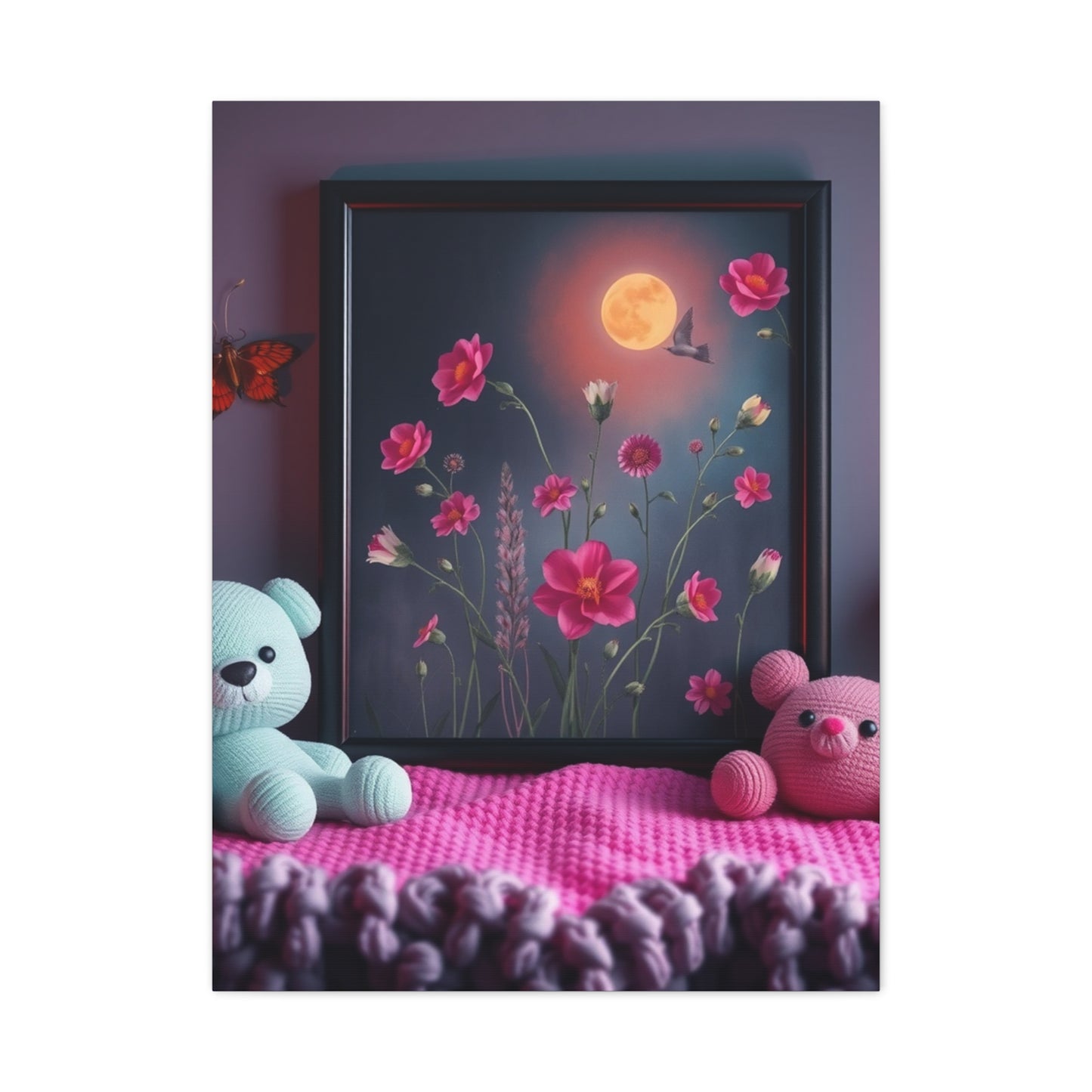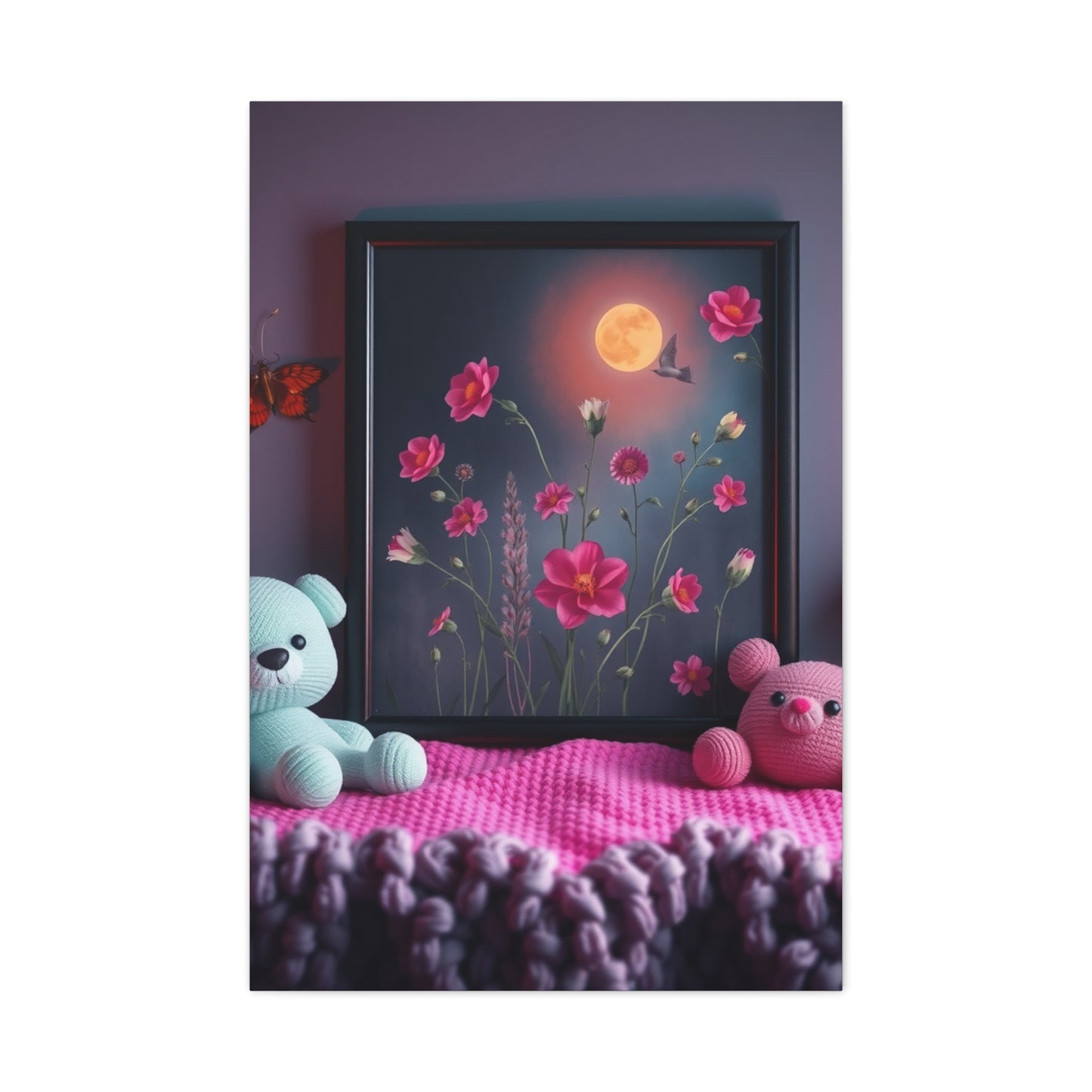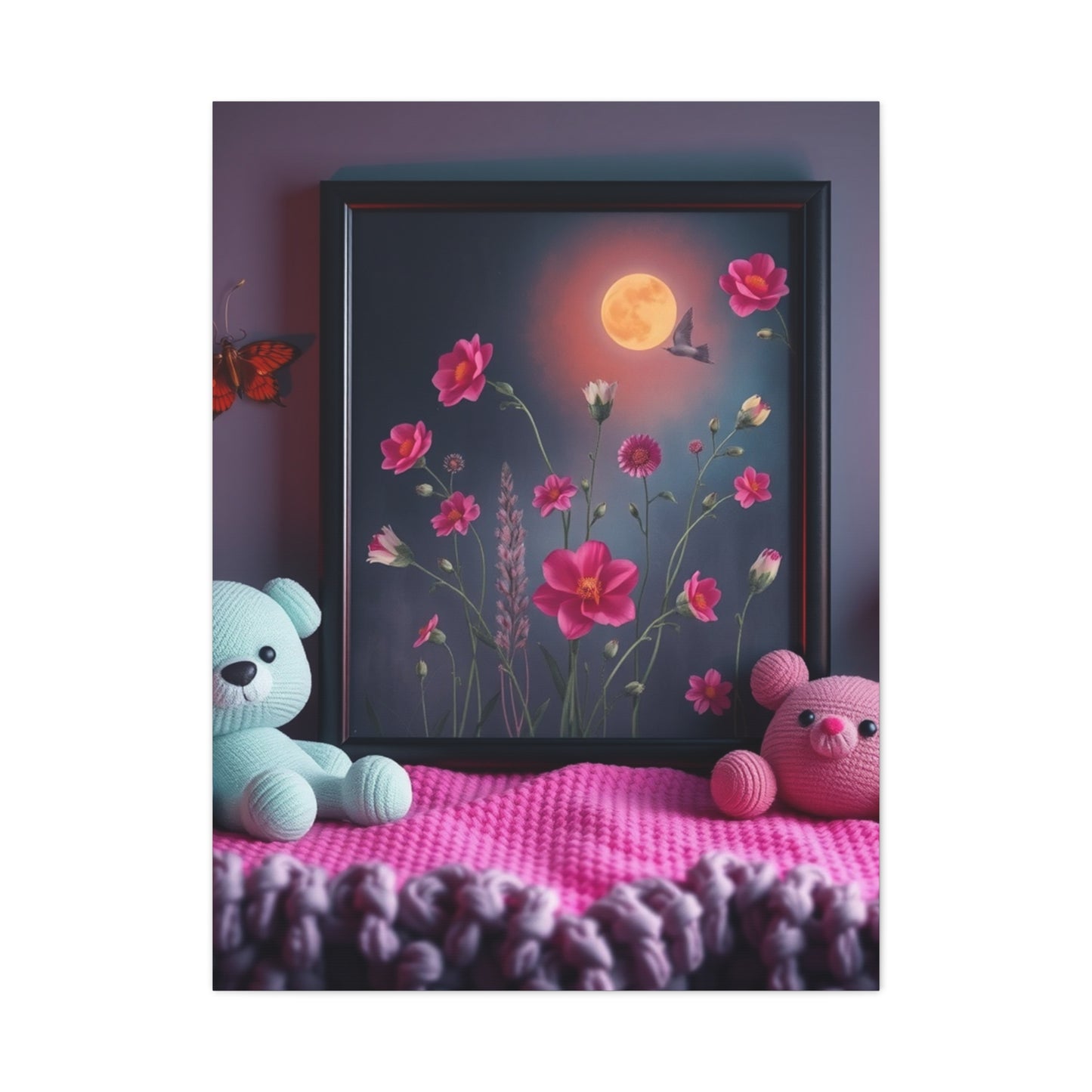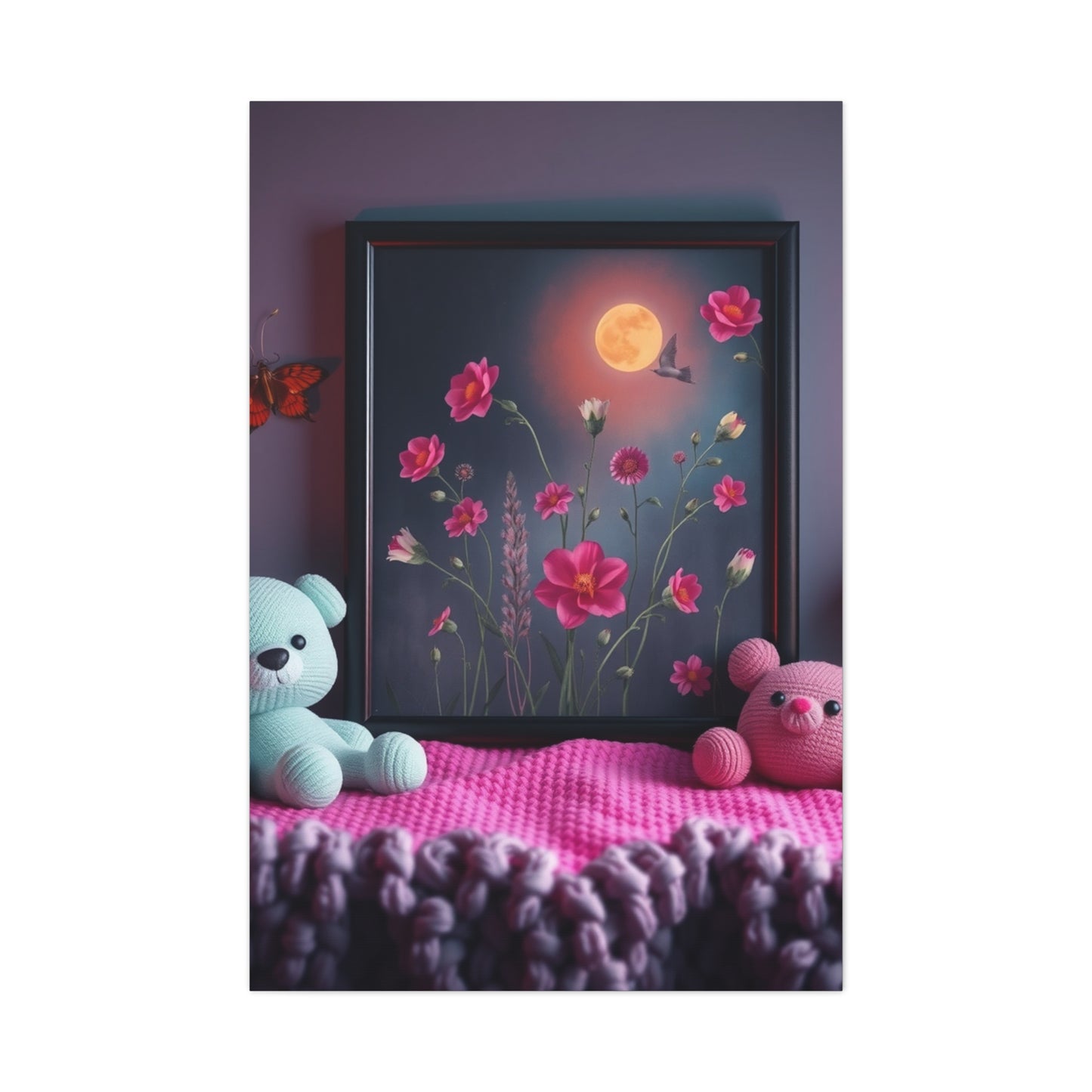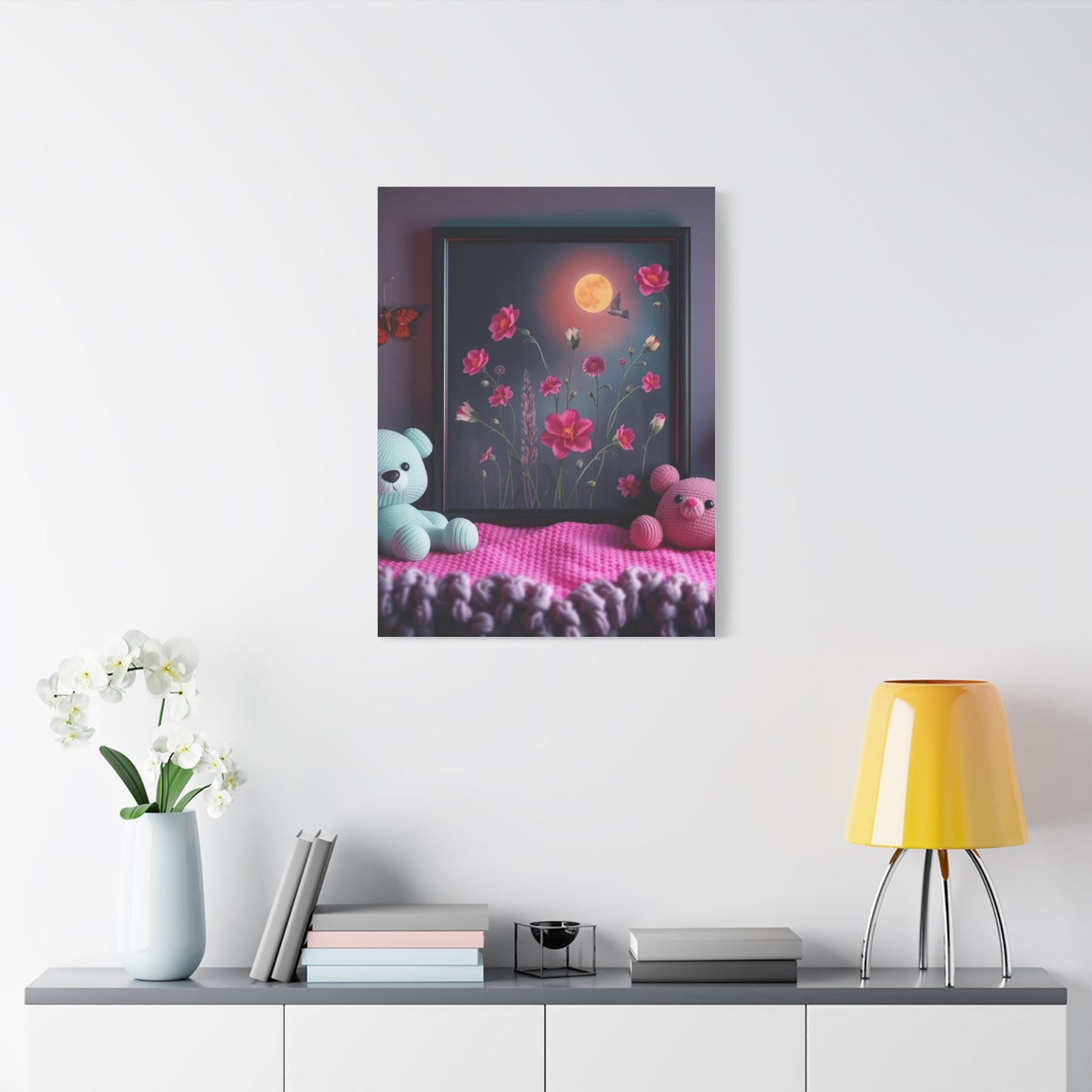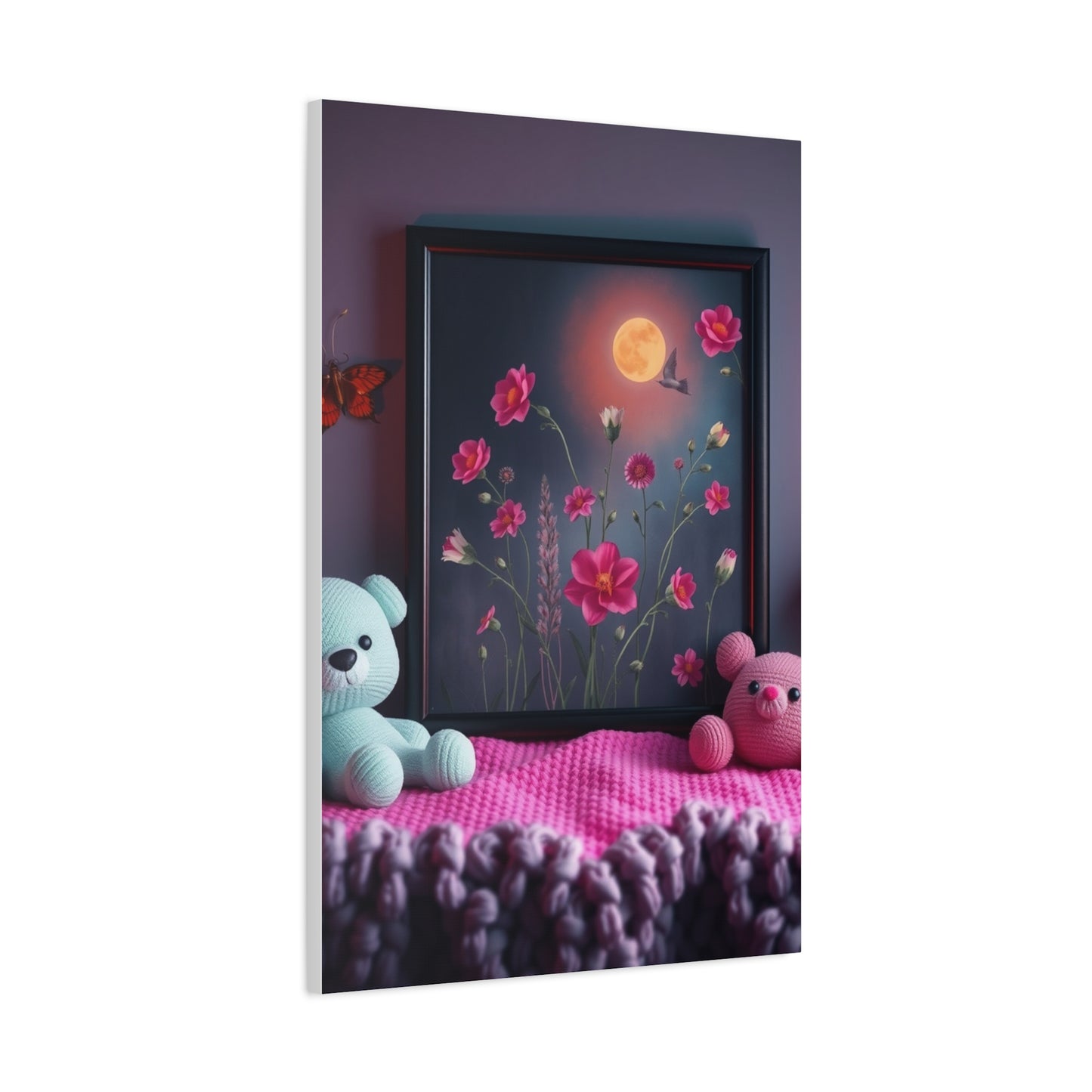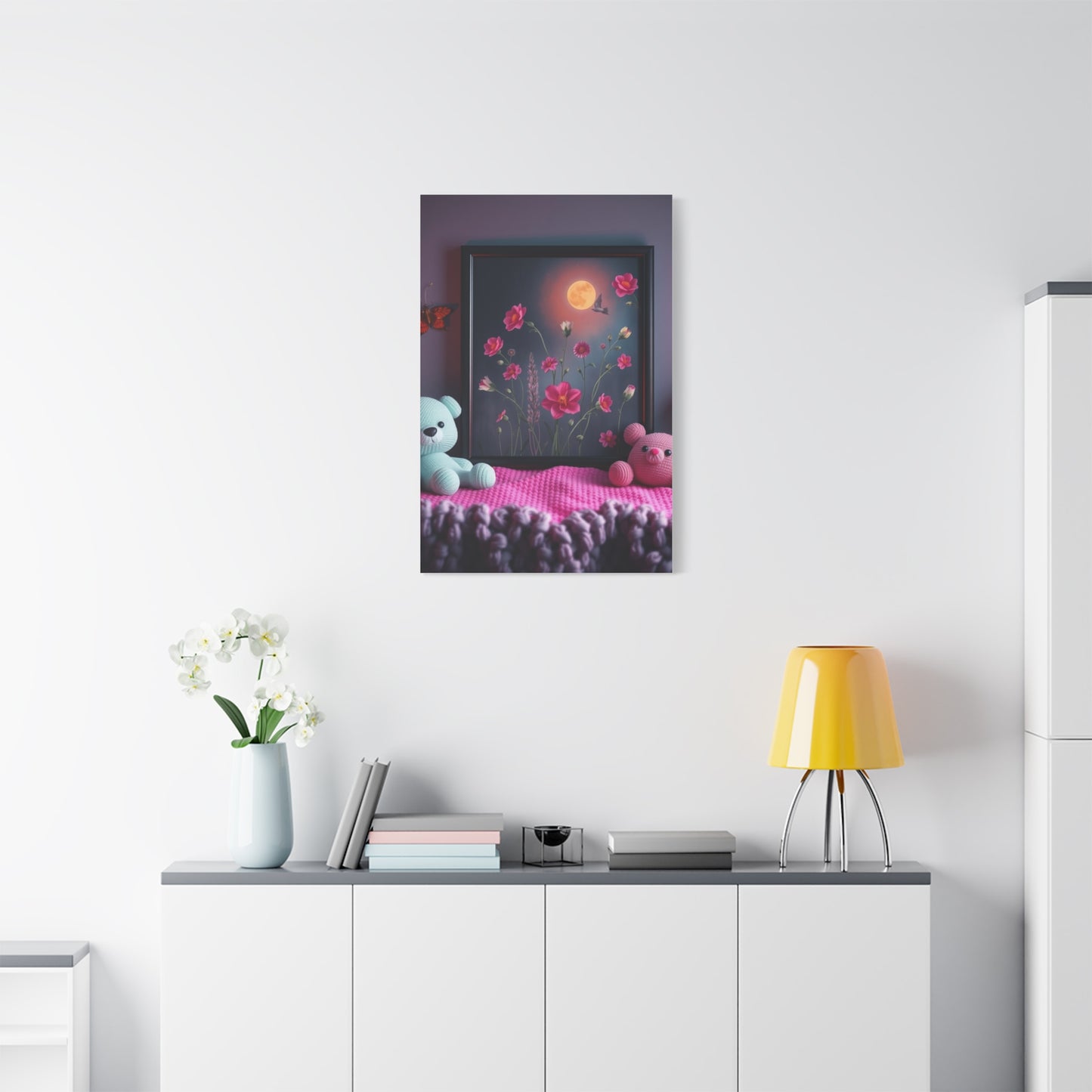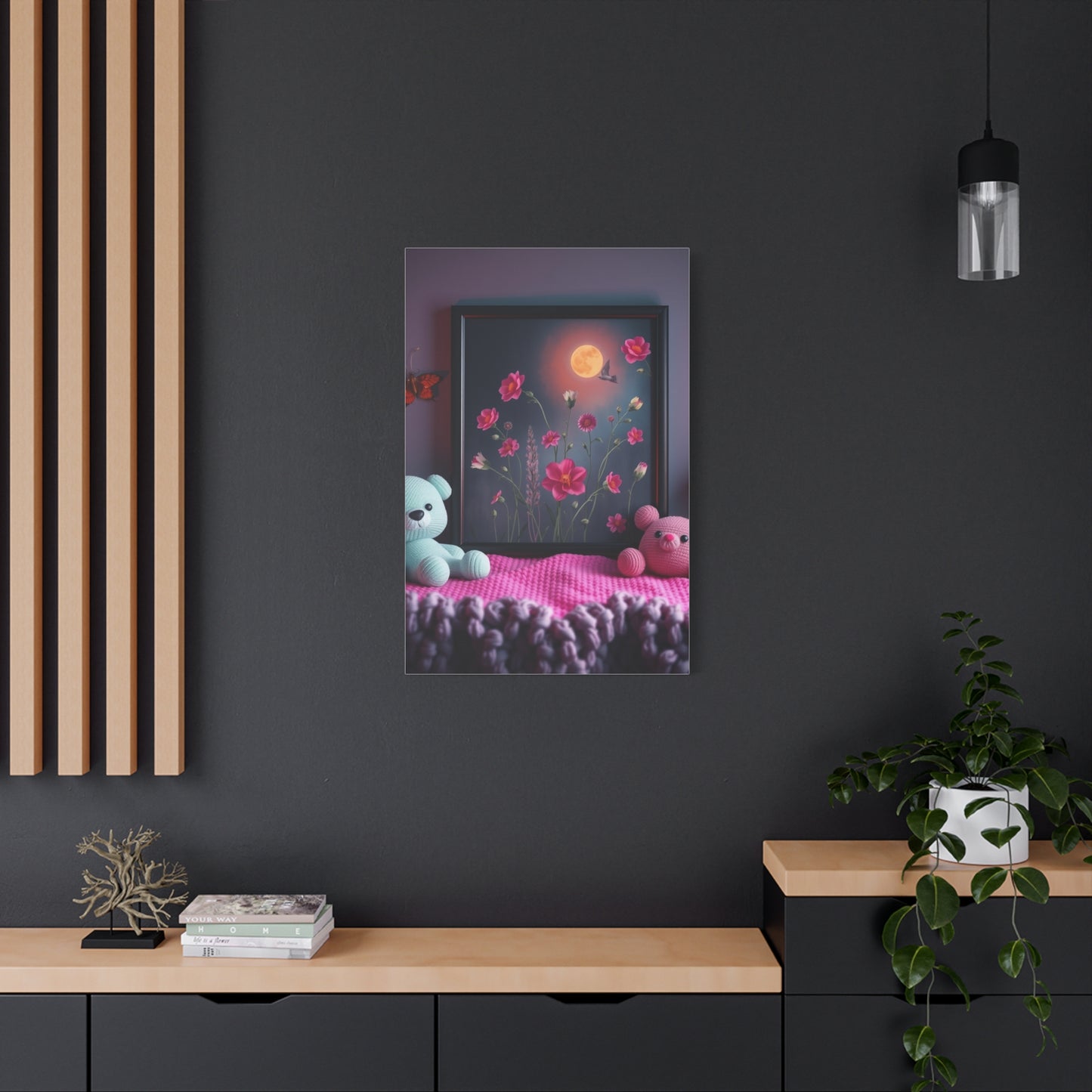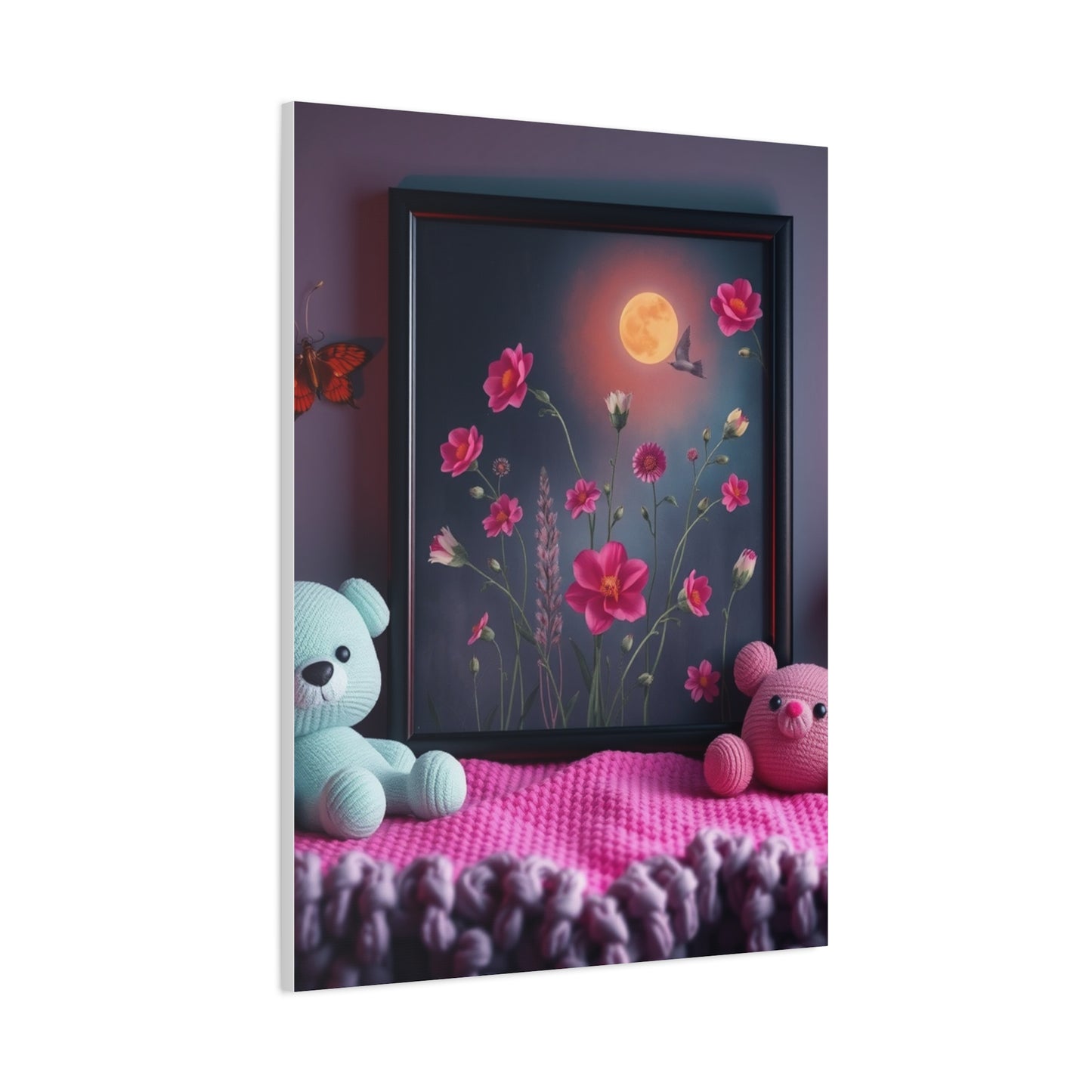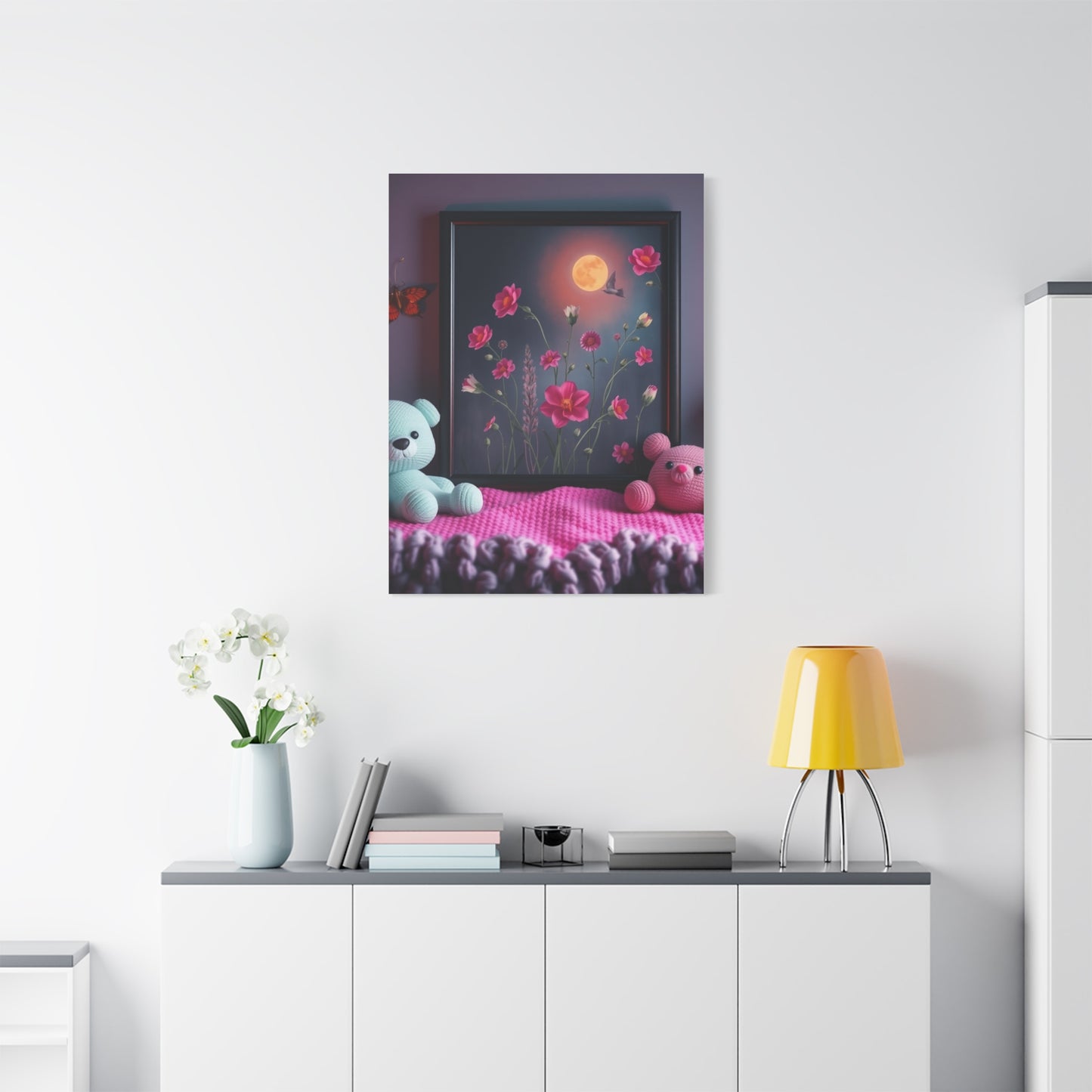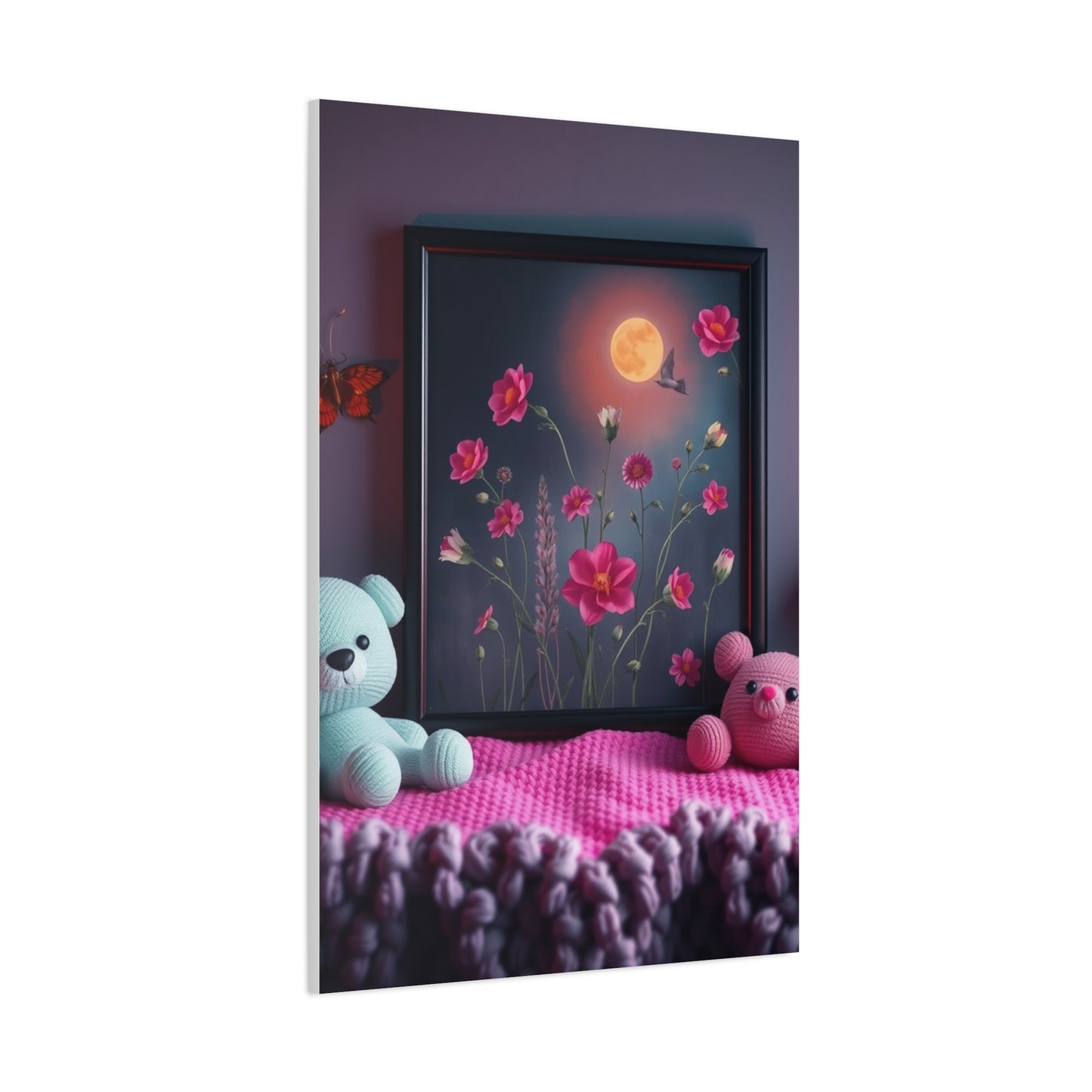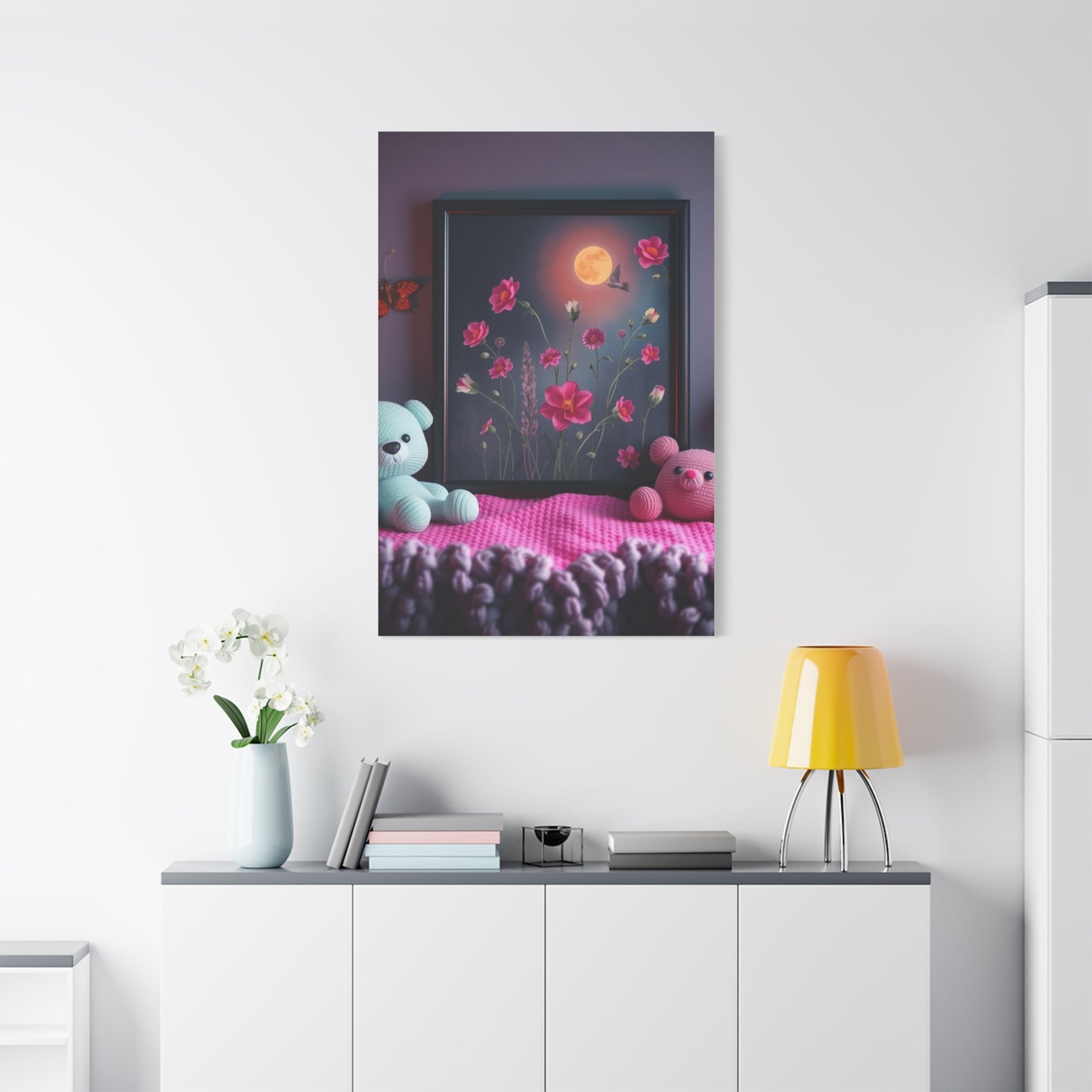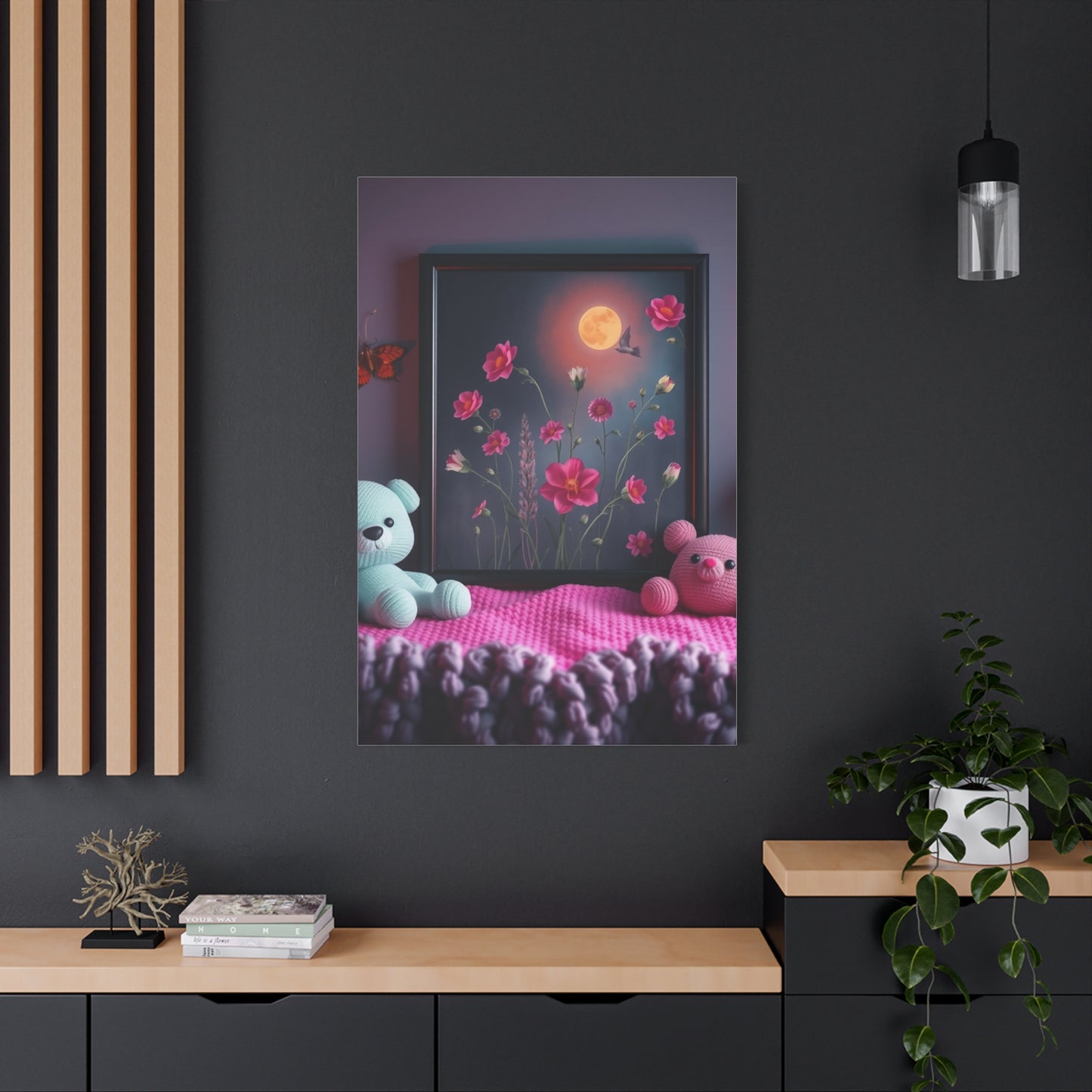Incorporating Chic Cherub Creations Wall Art Into Your Bedroom for a Dreamy Ambiance
The enchanting world of angelic decoration has captivated interior design enthusiasts for centuries, bringing an ethereal quality to living spaces that transcends temporal boundaries. These celestial beings, depicted in various artistic styles and interpretations, offer homeowners an opportunity to infuse their environments with grace, innocence, and timeless beauty. Whether you gravitate toward traditional representations or contemporary interpretations, incorporating these heavenly figures into your decor scheme creates focal points that spark conversation while elevating the overall aesthetic of any room.
The resurgence of interest in celestial imagery within modern interior design reflects a broader cultural appreciation for artworks that combine classical heritage with contemporary sensibilities. Homeowners increasingly seek decorative elements that tell stories, evoke emotions, and create meaningful connections within their personal sanctuaries. Angelic figures serve this purpose exceptionally well, offering versatility that allows them to complement diverse design philosophies from minimalist approaches to maximalist expressions.
When selecting pieces featuring these divine messengers, consideration must extend beyond mere aesthetic appeal. The interplay between artwork dimensions, color palettes, framing choices, and placement strategies determines whether these decorative elements harmonize with existing furnishings or create jarring visual discord. Understanding the historical context behind different artistic representations empowers homeowners to make informed decisions that reflect their personal tastes while respecting the rich cultural heritage these images carry.
The emotional resonance of angelic imagery cannot be understated. These figures universally symbolize protection, innocence, love, and divine intervention across numerous cultures and belief systems. Incorporating them into residential spaces creates atmospheres of tranquility and contemplation, offering visual respites from the complexities of modern life. Whether displayed in bedrooms to promote peaceful slumber, living areas to foster warmth and welcome, or hallways to guide transitions between spaces, these artistic choices profoundly impact how inhabitants and guests experience the home environment.
Chic Cherub Wall Art Ideas
Creating sophisticated displays featuring angelic children requires careful consideration of scale, proportion, and stylistic coherence. The most successful implementations balance classical elements with contemporary sensibilities, avoiding both sterile modernism and overly saccharine traditionalism. Begin by assessing your existing color scheme and architectural features. Rooms with neutral palettes provide ideal canvases for bold, colorful angelic representations, while spaces already rich in pattern and hue benefit from more subdued, monochromatic interpretations.
Consider creating gallery arrangements that combine multiple smaller pieces rather than relying solely on single statement works. This approach allows for dynamic visual storytelling, with different angelic poses and expressions creating narrative flow across wall surfaces. Arrange pieces at varying heights to encourage eye movement and maintain visual interest. The spaces between individual artworks matter as much as the pieces themselves, with thoughtful negative space preventing compositions from appearing cluttered or overwhelming.
Material selection significantly influences the final aesthetic impact. Canvas prints offer texture and depth that flat paper reproductions cannot match, with visible brushstroke textures adding authenticity and artistic legitimacy. Metal prints provide ultra-modern alternatives, their reflective surfaces creating dynamic interactions with ambient lighting throughout the day. Wood-mounted prints bring organic warmth particularly suited to rustic or farmhouse design schemes, while acrylic face-mounting delivers gallery-quality presentation with stunning clarity and dimensional depth.
Frame selection deserves equal attention, as inappropriate framing undermines even the most beautiful imagery. Ornate gilded frames suit traditional and maximalist interiors, their elaborate detailing echoing the decorative richness of baroque and rococo periods. Sleek black or white frames provide clean transitions appropriate for contemporary and minimalist spaces, allowing the artwork itself to command attention without frame distraction. Natural wood frames bridge traditional and modern aesthetics, offering versatility that complements diverse design vocabularies.
Lighting dramatically affects how angelic artwork presents within spaces. Picture lights mounted directly above pieces create focused illumination that emphasizes details and textures while generating dramatic shadows that enhance dimensional perception. Alternatively, adjustable track lighting allows for flexible highlighting as room configurations change over time. Natural lighting considerations prove equally important; artwork positioned opposite windows benefits from consistent illumination throughout daylight hours, while pieces adjacent to windows may suffer from glare issues requiring strategic placement adjustments.
The psychological impact of angelic imagery varies based on compositional elements. Upward-gazing figures create aspirational qualities that inspire contemplation and spiritual reflection, making them particularly appropriate for meditation spaces or quiet reading corners. Figures engaged in playful activities introduce lighthearted energy suitable for family gathering areas or children's spaces. Contemplative poses with downcast eyes foster intimacy and introspection, perfectly suited to bedrooms or private studies where personal reflection occurs.
Seasonal rotation strategies keep angelic displays fresh and engaging throughout the year. Spring selections might emphasize pastel palettes and floral accompaniments, celebrating renewal and growth. Summer choices could feature brighter, more vibrant interpretations that echo the season's exuberance. Autumn arrangements might incorporate warmer earth tones and harvest symbolism, while winter displays could emphasize metallic accents and celestial themes appropriate for holiday celebrations.
Elegant Angel Canvas Prints
The sophistication inherent in well-executed canvas prints elevates angelic imagery from mere decoration to genuine artistic expression. Quality reproduction techniques capture subtle gradations in shading, delicate facial features, and intricate wing details that inferior printing methods cannot achieve. When evaluating potential purchases, examine edge finishing carefully. Gallery-wrapped canvases with images continuing around side edges eliminate framing necessity while creating polished, contemporary presentations suitable for modern interiors.
Color accuracy represents another critical quality indicator. Superior printing processes utilize expanded color gamuts capturing the full tonal range of original artworks, from the palest highlights to the deepest shadows. Compare printed samples under various lighting conditions before committing to purchases, as some pigments shift dramatically between natural daylight and artificial illumination. Fade-resistant inks ensure long-term color stability, protecting your investment from the gradual deterioration that plagues lower-quality reproductions exposed to ambient light.
Size selection requires careful spatial analysis. Oversized canvases make bold statements in spacious rooms with high ceilings, their impressive scale commanding attention and establishing clear focal points. However, these same pieces overwhelm smaller intimate spaces, creating visual imbalance that makes rooms feel cramped and claustrophobic. Conversely, modest-sized prints disappear on expansive walls, their proportions insufficient to anchor surrounding furniture arrangements or create meaningful visual impact.
The rule of thirds provides useful guidance for determining appropriate dimensions. Artwork should occupy roughly two-thirds to three-quarters of available wall space above furniture pieces, creating visual connections between horizontal surfaces and vertical displays. When hanging pieces above sofas or console tables, ensure bottom edges float approximately six to eight inches above furniture tops, maintaining separation while preserving compositional unity.
Multi-panel configurations offer creative alternatives to single canvas presentations. Triptychs depicting sequential angelic scenes create dynamic storytelling opportunities, their segmented formats introducing rhythm and movement across wall expanses. Diptychs provide balance and symmetry particularly appropriate for spaces flanking doorways, windows, or architectural features. These split compositions also solve practical problems in rooms where single large pieces prove impossible to hang due to electrical outlets, switches, or structural limitations.
Abstract interpretations of angelic forms present exciting possibilities for those seeking less literal representations. Contemporary artists reimagine celestial beings through geometric simplification, focusing on essential forms rather than detailed realism. These stylized approaches complement modern minimalist interiors where traditional figurative artwork might appear incongruous. Color field techniques reduce angelic imagery to pure chromatic experience, with subtle tonal variations suggesting rather than explicitly depicting divine presence.
Textural enhancement techniques add dimensional interest to canvas prints. Some manufacturers apply gel mediums or varnish overlays that simulate actual brushwork, creating tactile surfaces that invite closer inspection. These embellishments bridge the gap between affordable prints and original paintings, delivering elevated aesthetic experiences at accessible price points. UV-protective topcoats serve dual purposes, enhancing visual depth while safeguarding underlying prints from environmental degradation.
Cherub Creations for Classic Interiors
Traditional design schemes demand angelic artwork that respects historical precedents while avoiding museum-like stuffiness. The most successful classic interiors balance period-appropriate elements with personal touches that reflect contemporary inhabitants rather than recreating frozen historical tableaux. Angelic imagery drawn from Renaissance and baroque sources naturally complements formal living rooms, dining spaces, and entry halls where classical architectural details prevail.
Symmetry governs classical design principles, and angelic artwork arrangements should honor this fundamental tenet. Pairs of matching or complementary pieces flanking mantels, doorways, or focal furniture create balanced compositions that satisfy the classical preference for order and proportion. When perfect symmetry proves unattainable, aim for visual weight balance, pairing larger pieces on one side with groupings of smaller works on the other to achieve equilibrium.
Color harmonies within classical interiors typically favor rich, saturated hues rather than pastel softness. Deep burgundies, forest greens, navy blues, and golden ochres provide sophisticated backdrops for angelic imagery. Seek artwork incorporating these traditional palette references, ensuring decorative cohesion across all room elements. Gilded accents within artwork compositions echo the gold leaf details common in classical moldings, frames, and furnishings, creating subtle visual connections that unify the overall design scheme.
Architectural integration elevates angelic artwork from applied decoration to seemingly inherent design features. Position pieces within paneled wall sections, using existing molding frameworks as natural borders that eliminate separate framing needs. Alternatively, install custom millwork specifically designed to showcase cherished angelic pieces, with built-in lighting and proportions tailored to artwork dimensions. These permanent installations demonstrate commitment to specific pieces while creating focal points with architectural gravitas.
Classical interiors often feature multiple decorative layers, with artwork competing for attention alongside mirrors, sconces, tapestries, and ornamental objects. Avoid visual chaos by establishing clear hierarchies. Designate angelic artwork as primary focal points, then subordinate surrounding elements to supporting roles. This might mean simplifying adjacent wall decorations, selecting more neutral frame finishes for nearby pieces, or adjusting lighting to emphasize preferred focal points while dimming less important elements.
Period-appropriate subject matter enhances authenticity in classical settings. Renaissance-era cherubs typically appear plumper and more childlike than their neoclassical counterparts, who exhibit more refined features and graceful proportions. Baroque interpretations favor dramatic poses, billowing drapery, and theatrical lighting effects that inject energy and movement. Rococo versions embrace playfulness and decorative excess, with elaborate floral garlands, ribbons, and pastoral settings. Matching artistic periods to your interior's predominant historical influence creates convincing cohesion.
Provenance and reproduction quality matter significantly in traditional settings where connoisseurship carries weight. Seek prints reproducing masterworks from established museum collections, with clear attribution to original artists and creation dates. Premium reproduction houses provide certificates of authenticity and detailed information about printing processes, paper stocks, and edition sizes. These documentary elements add legitimacy and collectible appeal beyond mere decorative value.
Modern Twist on Cherub Wall Decor
Contemporary reinterpretations of angelic themes demonstrate that classical subjects remain relevant when approached with fresh perspectives. Modern artists deconstruct traditional iconography, isolating specific elements like wings, halos, or gesture while eliminating representational details. These abstracted approaches allow angelic symbolism to permeate spaces without imposing overtly religious or sentimental overtones that some contemporary homeowners find uncomfortable.
Color manipulation provides powerful tools for modernizing traditional subjects. Unexpected palettes transform familiar imagery into striking contemporary statements. Imagine cherubic figures rendered in electric blues and acid greens rather than conventional flesh tones and pastels. Monochromatic schemes presenting angelic forms in grayscale or sepia create sophisticated, gallery-worthy presentations that shed saccharine associations. Neon accents inject urban edge, while metallic finishes add luxurious glamour appropriate for upscale contemporary interiors.
Scale distortion offers another modernization strategy. Extreme close-ups isolating portions of angelic anatomy create abstract compositions where wings become pure pattern, faces dissolve into emotional gesture, and hands transform into sculptural forms. Conversely, distant views reducing figures to simple silhouettes emphasize shape and negative space over decorative detail. These compositional choices align with contemporary art's preference for conceptual depth over technical virtuosity.
Mixed media approaches blend angelic imagery with unexpected materials and techniques. Digital collages combine classical paintings with photographic elements, typography, or geometric overlays. Screen printing introduces graphic flatness and bold color blocking. Textural additions incorporating fabric, metal leaf, or encaustic wax create hybrid works that transcend traditional painting categories. These innovative techniques signal contemporary artistic engagement rather than passive historical reproduction.
Installation methods themselves contribute to modern presentation aesthetics. Frameless mounting systems using hidden hardware create floating appearances, with artwork seeming to hover independently against wall surfaces. Oversized pieces extending floor-to-ceiling or spanning multiple walls dissolve boundaries between decoration and architecture. Backlit installations transform angelic images into luminous focal points, particularly dramatic in dimly lit spaces or evening settings.
Ironic or subversive treatments challenge traditional angelic iconography's inherent innocence. Street art influences introduce graffiti aesthetics, with spray-painted halos, stenciled wings, and urban decay contexts. Pop art strategies employ repetition, bold outlines, and commercial imagery references that question high art pretensions. These irreverent approaches appeal to collectors seeking conversation pieces that provoke thought rather than simply decorating spaces.
Contextual juxtapositions create meaning through unexpected pairings. Placing angelic imagery alongside industrial materials like concrete, steel, or exposed brick generates compelling contrasts between ethereal subject matter and raw physical context. Combining cherubic innocence with edgy contemporary photography or abstract expressionism creates visual tension that energizes spaces and stimulates dialogue. These considered juxtapositions demonstrate sophisticated curatorial thinking that elevates residential displays to gallery-level presentations.
Romantic Cherub Canvas Designs
Cultivating romantic atmospheres through angelic artwork requires sensitivity to emotional resonance and aesthetic subtlety. The most effective romantic presentations avoid cloying sentimentality, instead evoking gentle emotions through refined imagery and thoughtful placement. Soft-focus techniques that slightly blur details create dreamy qualities perfect for intimate spaces intended to foster connection and affection. Lighting integration proves particularly important in romantic contexts, with dimmable fixtures allowing atmospheric adjustment suited to different occasions and moods.
Color psychology significantly influences romantic perception. Blush pinks suggest tenderness and nurturing affection. Lavenders evoke mystery and spiritual connection. Warm creams and ivories convey purity and timeless devotion. Deep roses and burgundies introduce passionate intensity. Select angelic artwork incorporating these romantic palette associations, ensuring color harmony with bedding, window treatments, and upholstery that comprise your intimate environment's visual foundation.
Compositional elements within artwork contribute to romantic readings. Paired cherubs gazing toward each other symbolize partnership and mutual devotion. Single contemplative figures prompt introspection about love's meaning and personal relationships. Angelic musicians playing lyres or flutes reference classical love symbolism where music represents the harmony of compatible souls. Floral accompaniments add layers of romantic meaning, with roses signifying passion, lilies representing purity, and forget-me-nots embodying eternal remembrance.
Placement strategies amplify romantic impact. Positioning angelic artwork as the first sight upon entering bedrooms establishes immediate emotional tone. Pieces visible from bed establish contemplative focal points for quiet morning moments or bedtime reflection. Artwork flanking windows frames natural light with ethereal beauty, while pieces above dressing tables or vanities infuse personal grooming rituals with grace and self-appreciation.
Chic Angel Art for Living Rooms
Living spaces serve as homes' public faces, welcoming guests while accommodating family gatherings and daily activities. Angelic artwork in these contexts must balance aesthetic appeal with conversational accessibility, providing visual interest without dominating spaces dedicated to human interaction. Scale assumes critical importance, as living room walls typically offer generous dimensions that modest artwork cannot adequately address.
Statement pieces measuring four feet or larger create commanding focal points around which furniture arrangements naturally organize. Position these substantial works on primary walls opposite room entries, ensuring immediate visual impact as guests arrive. Alternatively, place them above sofas or mantels, anchoring conversation areas with artistic authority. The visual weight of these major pieces influences furniture scale requirements; oversized artwork demands substantial sofas, coffee tables, and accent pieces to maintain proportional balance.
Color coordination between angelic artwork and living room palettes requires strategic thinking. Decide whether artwork should blend harmoniously with existing colors or provide contrasting accents. Harmonious approaches create serene, cohesive environments where artwork reinforces established color schemes. Contrast strategies use artwork to inject energy and visual punctuation, with bold colors or unexpected palette choices creating dynamic focal points. Neither approach proves inherently superior; selection depends on desired atmospheric qualities and personal preferences.
Living room lighting presents unique challenges and opportunities. These multipurpose spaces require flexible illumination supporting diverse activities from television viewing to reading to entertaining. Dedicated artwork lighting must integrate within these complex systems without creating glare on screens or uncomfortable brightness during evening relaxation. Adjustable fixtures with dimming capabilities offer essential flexibility, allowing artwork illumination levels to adapt as room functions shift throughout the day.
Conversation-starting qualities enhance angelic artwork's value in social spaces. Select pieces with interesting backstories, unusual artistic techniques, or thought-provoking interpretations that naturally invite discussion. Unexpected treatments or contemporary reinterpretations of classical themes provide talking points that extend beyond simple aesthetic appreciation. This conversational dimension adds functional value beyond decoration, facilitating social interaction and revealing shared interests among guests.
Durability considerations affect living room artwork choices. High-traffic areas experience greater environmental stresses from temperature fluctuations, airborne contaminants, and accidental impacts. Opt for robust mounting systems with secure hardware preventing accidents. Consider protective glazing for valuable pieces, though be aware that glass reflections can interfere with viewing. Canvas prints generally offer superior durability compared to paper works, their flexible substrates better withstanding minor impacts and environmental variations.
Integration with entertainment technology requires thoughtful planning. Artwork competing with large televisions often loses visual battles, particularly when screens illuminate. Consider proportional relationships carefully; substantial artwork measuring at least half the television's width maintains meaningful presence even when screens draw attention. Alternatively, embrace asymmetry by placing artwork on adjacent walls, creating separate focal zones for aesthetic and technological interests.
Vintage Cherub-Inspired Wall Prints
Nostalgic yearning for bygone eras finds perfect expression through vintage angelic imagery. These prints reference historical styles, printing techniques, and subject matter that evoke specific periods, from Victorian sentimentality to mid-century modern restraint. Authenticity markers distinguish genuine vintage approaches from superficial retro styling. Appropriate aging effects including subtle discoloration, foxing spots, and gentle fading suggest natural patina rather than artificial distressing.
Victorian-era inspirations emphasize ornate decorative abundance. Cherubs appear amid elaborate floral arrangements, scrollwork borders, and layered compositions reflecting period horror vacui. Color palettes favor muted tones suggesting aged chromolithographs and hand-tinted photographs. These richly detailed approaches suit traditional and cottage-style interiors where decorative profusion creates welcoming warmth rather than overwhelming chaos.
Art Nouveau influences introduce organic flowing lines and stylized natural forms. Angelic figures integrate within sinuous compositions where wings echo botanical curves and drapery suggests wind movement through meadow grasses. Elongated proportions and decorative flatness characteristic of the style create distinctive silhouettes immediately recognizable to design-informed viewers. Color choices emphasize earth tones, sage greens, and dusty roses that harmonize with Arts and Crafts furniture and handcrafted decorative objects.
Mid-century modern vintage approaches embrace graphic simplification and restrained palettes. Angelic forms reduce to essential shapes with minimal detail. Bold outlines and flat color application reflect printing limitations that became aesthetic choices. These stripped-down interpretations complement clean-lined furniture and uncluttered spaces where every element receives careful consideration. Avocado greens, burnt oranges, and harvest golds situate these pieces firmly within their historical moment.
Printing technique references add authenticity to vintage presentations. Halftone dot patterns simulate period newspaper and magazine printing. Lithographic textures suggest hand-pulled prints from stone matrices. Letterpress impressions create subtle surface relief. While modern digital printing produces these effects artificially, they successfully evoke specific historical moments, triggering nostalgic responses among viewers familiar with original techniques.
Baroque Cherub Wall Art Style
The baroque period's dramatic intensity and emotional grandeur provide rich inspiration for angelic artwork selections. Characterized by dynamic movement, theatrical lighting, and ornate elaboration, baroque aesthetics create powerful visual impact appropriate for formal spaces and those seeking commanding decorative statements. Understanding key baroque characteristics helps identify authentic stylistic approaches versus superficial historical pastiche.
Compositional dynamism defines baroque visual strategies. Diagonal arrangements create movement and energy absent from stable horizontal-vertical compositions. Cherubic figures appear mid-flight, with billowing drapery and wind-swept hair suggesting rapid movement through space. Foreshortened perspectives push figures toward viewers or recede into illusionistic depths. These activating techniques transform static wall surfaces into dynamic visual experiences that command attention and reward extended viewing.
Chiaroscuro lighting techniques create dramatic tonal contrasts fundamental to baroque visual identity. Angelic figures emerge from dark atmospheric backgrounds, illuminated by focused light sources suggesting divine radiance. Deep shadows model three-dimensional forms while creating mysterious spatial ambiguity. These theatrical lighting approaches inject grandeur and spiritual significance, elevating decorative artwork toward profound symbolic expression.
Ornamental abundance characterizes baroque decorative philosophy. Multiple cherubs crowd compositions, their overlapping forms creating visual richness and compositional complexity. Elaborate architectural elements including columns, drapery swags, and cloud formations provide contextual settings. Floral garlands and symbolic objects add layers of meaning. This decorative profusion reflects baroque confidence and celebratory worldview, though modern applications require careful dosing to avoid overwhelming contemporary spaces.
Color palettes emphasize richness and saturation. Deep reds suggest passion and sacrifice. Royal blues convey celestial majesty. Golden yellows reference divine light and heavenly glory. These intense chromatic choices demand careful integration within modern interiors, where neutral backgrounds allow baroque artwork's inherent drama to register without creating visual chaos. Alternatively, embrace maximalist approaches where baroque artwork contributes to intentionally rich, layered environments celebrating decorative abundance.
Scale considerations prove crucial for baroque-styled artwork. The period's monumental architectural contexts favored large-scale compositions that modern residential spaces may struggle to accommodate. Seek substantial pieces appropriate to available wall dimensions, understanding that baroque's inherent drama diminishes when reduced to modest scales. Alternatively, commission custom enlargements of baroque masterworks, scaling compositions to suit contemporary contexts while preserving stylistic integrity.
Heavenly Angel Wall Murals
Expansive mural installations transform entire walls into immersive celestial environments. These ambitious treatments create dramatic impact impossible through conventional framed artwork, effectively dissolving architectural boundaries while establishing powerful atmospheric qualities. Successful mural implementation requires careful planning addressing technical installation challenges, design integration concerns, and long-term commitment implications.
Scale represents murals' defining characteristic and primary appeal. Floor-to-ceiling coverage creates enveloping environments transporting viewers beyond physical rooms into imagined celestial realms. Cloud-filled skies populated with cherubic figures suggest heavenly dimensions opening beyond mundane walls. These transportive qualities particularly suit meditation spaces, spiritual retreat areas, or any environment seeking transcendent atmospheric qualities.
Design continuity challenges arise when mural compositions encounter architectural interruptions including windows, doors, electrical outlets, and heating registers. Skilled mural designs anticipate these obstacles, organizing compositions so critical elements avoid interruptions while less important background areas accommodate necessary intrusions. Pre-installation planning identifies all wall penetrations, allowing designers to adjust compositions accordingly. Digital mockups showing finished installations help visualize results before irreversible commitments.
Application methods vary considerably, each offering distinct advantages and limitations. Hand-painted murals by skilled artists provide authentic artisanal quality and complete customization but require substantial time and financial investment. Printed wall coverings offer affordability and rapid installation but lack original artwork's prestige and uniqueness. Peel-and-stick decal systems provide convenient impermanence suited to renters or those anticipating design changes but may appear less sophisticated than permanent installations.
Material selection affects durability, appearance, and maintenance requirements. Non-woven wallcovering substrates offer superior dimensional stability compared to paper-based materials, minimizing seam visibility and installation challenges. Textured surfaces add dimensional interest though they may complicate cleaning. Matte finishes minimize glare and reflections, while subtle sheens add luminous qualities particularly appropriate for celestial subjects. Protective coatings enhance durability in high-traffic areas or spaces exposed to moisture and temperature fluctuations.
Minimalist Cherub Canvas Prints
Minimalist design philosophy's emphasis on essentialism and restraint initially appears incompatible with cherubic imagery's inherent decorativeness. However, thoughtful approaches successfully reconcile these seemingly opposed aesthetics, creating refined presentations where angelic symbolism manifests through suggestion rather than explicit representation. The challenge lies in identifying or creating angelic imagery sufficiently abstracted to satisfy minimalist requirements while retaining recognizable references to source material.
Reductive techniques strip imagery to fundamental elements. Silhouettes eliminate interior detail, presenting angelic forms as pure shapes against contrasting backgrounds. Line drawings reduce figures to essential contours, with minimal strokes suggesting volume and gesture. Geometric abstraction translates organic angelic forms into mathematical precision, with circles representing halos, triangles suggesting wings, and ovals denoting cherubic faces. These simplified approaches align with minimalism's preference for clarity and directness.
Monochromatic palettes advance minimalist objectives through chromatic restraint. Black-and-white presentations emphasize form and composition over coloristic appeal. Grayscale variations provide tonal subtlety within limited ranges. Single-color approaches using various tints and shades of singular hues create sophisticated unity. These restricted palettes prevent visual clutter, allowing remaining design elements including furniture, architecture, and natural light to achieve appropriate prominence.
Negative space assumes equal importance to positive imagery in minimalist compositions. Generous unmarked areas surrounding angelic elements create visual breathing room preventing claustrophobic crowding. These empty zones provide rest points balancing areas of visual activity. Strategic negative space also emphasizes isolation and contemplation, reinforcing spiritual and meditative associations appropriate to angelic subject matter. Composition becomes as much about what's excluded as what's included.
Scale relationships require recalibration in minimalist contexts. Rather than filling available space, minimalist artwork intentionally occupies modest portions, with surrounding emptiness becoming integral compositional elements. Small, precise pieces centered on expansive walls make bold statements through confident restraint. This counterintuitive approach demonstrates sophisticated design understanding, resisting conventional impulses toward maximal coverage.
Luxury Cherub Wall Art Ideas
Luxury expressions through angelic artwork transcend mere expense, encompassing craftsmanship quality, material excellence, design sophistication, and cultural resonance. Truly luxurious pieces demonstrate discerning taste and appreciation for artistic achievement beyond shallow status signaling. Understanding what constitutes genuine luxury versus superficial ostentation guides appropriate selections reflecting refined sensibilities.
Original artwork represents luxury's pinnacle, with unique pieces by established or emerging artists offering exclusivity impossible through reproductions. Commissioning custom cherubic paintings or sculptures tailored to specific spaces and preferences provides ultimate personalization. Original works carry investment potential beyond decorative value, with pieces by recognized artists appreciating financially. Gallery relationships and art advisor consultations help navigate art markets, identifying worthy investments aligned with aesthetic preferences and budgetary parameters.
Limited edition prints occupy middle ground between unique originals and unlimited reproductions. Numbered editions with artist signatures provide collectible appeal and relative exclusivity. Print runs typically range from dozens to hundreds, with lower numbers commanding premium prices. Verify authenticity through proper documentation including certificates of authenticity, edition numbers, and provenance records. Reputable publishers and galleries provide these materials as standard practice, with their absence raising legitimacy concerns.
Premium materials elevate even reproduction status. Hand-made rag papers using traditional techniques offer superior longevity and aesthetic qualities compared to industrial papers. Archival pigment inks resist fading indefinitely under proper conditions. Museum-quality glazing using ultraviolet-filtering and reflection-reducing coatings protects artwork while maximizing visibility. Custom framing employing conservation techniques ensures long-term preservation. These quality investments demonstrate serious collecting commitment beyond transient decoration.
Scale and presence distinguish luxury presentations from conventional displays. Monumental pieces measuring six feet or larger create undeniable impact appropriate to grand spaces. Multiple coordinated pieces forming cohesive collections demonstrate curatorial sophistication. Entire rooms dedicated to single significant works or unified thematic presentations reflect passion transcending casual decorating. These bold commitments announce collecting seriousness and aesthetic confidence.
Playful Angel Wall Art Trends
Contemporary design increasingly embraces whimsy and personality, rejecting previous generations' earnest seriousness. Playful angelic artwork injects lightheartedness and joy into spaces, creating welcoming environments celebrating life's pleasures rather than aspiring toward austere perfection. These spirited approaches particularly suit family homes, creative studios, and anywhere inhabitants prioritize happiness and self-expression over conventional formality.
Color vibrancy distinguishes playful presentations from subdued alternatives. Saturated primaries, unexpected combinations, and gradient effects create visual excitement. Rainbow palettes celebrating chromatic abundance reject minimalist restraint in favor of joyful exuberance. Neon accents inject contemporary edge while honoring childhood's uninhibited color enthusiasm. These bold choices signal spaces prioritizing energy and creativity over calming serenity.
Unexpected juxtapositions generate playful surprise. Angelic figures appearing in unlikely contexts including urban streetscapes, outer space, or underwater environments create delightful incongruity. Anachronistic combinations placing Renaissance cherubs alongside contemporary technology or pop culture references produce humorous mashups. These creative pairings demonstrate irreverent creativity challenging traditional iconography's solemn associations.
Scale manipulation creates playful drama. Oversized cherubs dominating spaces with childlike features enlarged to monumental proportions elicit smiles and wonder. Miniature angels scattered across walls like decorative confetti suggest magical presence. Unexpected size relationships where tiny cherubs interact with full-scale objects or enormous figures dwarf surrounding elements play with perception and spatial understanding in entertaining ways.
Interactive elements engage viewers beyond passive observation. Chalkboard or dry-erase surfaces allowing viewers to add speech bubbles, accessories, or background details invite participation. Magnetic surfaces accepting decorative additions enable evolving displays reflecting changing moods and seasons. Augmented reality integrations where smartphone apps reveal hidden animations or additional imagery blend traditional artwork with digital innovation, particularly appealing to technology-native younger generations.
Humorous expressions and poses inject personality into angelic presentations. Laughing cherubs, mischievous expressions, and playful gestures replace conventional serenity with relatable emotion. Angels engaged in contemporary activities including sports, gaming, or socializing create accessible familiarity. These humanizing approaches make angelic imagery approachable for those finding traditional representations too remote or religious.
Cherub Canvas for Hallway Decor
Hallways present unique decorative challenges, their transitional nature and confined dimensions requiring specialized approaches. These circulation spaces often lack natural lighting and offer limited viewing distances, yet they provide valuable display opportunities when thoughtfully addressed. Angelic artwork in hallways guides movement, provides visual interest during passage, and creates cohesive connections between adjacent rooms.
Gallery wall arrangements maximize hallway potential despite space limitations. Multiple smaller pieces arranged in linear progressions create visual journeys accompanying physical movement through spaces. Varying heights and sizes within unified themes maintain interest without creating chaos. Consistent framing unifies diverse images while reinforcing gallery presentation legitimacy. These curated collections transform overlooked transitional zones into destination-worthy displays.
Lighting solutions require creative problem-solving in hallways lacking windows. Picture lights mounted above individual pieces provide focused illumination emphasizing artwork while contributing ambient lighting. LED strip lighting installed in ceiling coves creates gentle overall illumination. Motion-activated fixtures offer practical convenience while reducing energy consumption. These layered lighting strategies ensure artwork visibility despite challenging environmental conditions.
Narrow widths necessitate careful scale considerations. Artwork extending too far into limited space creates hazardous protrusions and claustrophobic feelings. Maintain minimum clearances allowing comfortable passage without artwork concerns. Multiple smaller pieces prove safer than single large works in particularly tight corridors. Shallow frame profiles minimize protrusion while streamlined mounting systems eliminate protruding hanging hardware.
Vertical emphasis suits hallway proportions, their length exceeding height. Vertical canvas orientations and stacked arrangements reinforce architectural directionality. Floor-to-ceiling treatments maximize visual impact within confined parameters. These vertical strategies draw eyes upward, creating height perception that counteracts narrow width limitations.
Soft Pastel Cherub Creations
Pastel palettes evoke gentleness, innocence, and nostalgic sentimentality particularly appropriate for angelic subject matter. These soft chromatic approaches create soothing environments ideal for nurseries, bedrooms, and anywhere tranquility remains paramount. Understanding pastel psychology and application strategies ensures successful implementation avoiding common pitfalls including excessive sweetness or washed-out blandness.
Color selection requires subtle discrimination within limited ranges. Cool pastels including powder blues, mint greens, and lavenders promote relaxation and calm. Warm pastels such as peach, butter yellow, and coral introduce gentle energy without stimulation. Neutral pastels including ivory, champagne, and gray-beige provide sophisticated foundations. Combining pastels from related temperature families creates harmonious compositions, while strategic mixing of warm and cool shades generates subtle dynamism preventing monotony.
Contrast levels determine pastel presentation success. Insufficient contrast produces washed-out appearances lacking definition and visual interest. Excessive contrast introduces harshness contradicting pastel softness. Optimal approaches incorporate sufficient value variation for legibility while maintaining gentle tonal transitions. Angelic figures rendered in slightly darker pastels against lighter backgrounds achieve visibility without losing characteristic softness. Strategic accent darks in limited areas including eyes, shadows, or decorative details provide necessary definition.
Background treatments significantly influence pastel effectiveness. Pure white backgrounds can appear stark, their brightness overwhelming delicate pastels. Cream or light gray backgrounds provide sympathetic contexts allowing pastels to register without competing with excessive brightness. Subtly tinted backgrounds in complementary pastel shades create monochromatic harmonies of exceptional sophistication. Consider background choices carefully, as they profoundly affect overall impression.
Texture additions prevent pastel presentations from appearing flat or lifeless. Visible brushwork adds dimensional interest and artisanal authenticity. Subtle pattern overlays including delicate florals, geometric screens, or textured papers introduce complexity without overwhelming. Metallic accents in gold, silver, or iridescent finishes catch light dynamically, injecting vitality into otherwise soft presentations. These textural strategies ensure pastels feel rich rather than weak.
Classic Cherub Art Reimagined
Historical angelic imagery offers rich source material for contemporary reinterpretation. Rather than faithfully reproducing period works, innovative artists extract essential elements while introducing modern sensibilities creating hybrid works respecting tradition while embracing innovation. These reinterpretations make classical imagery accessible to contemporary audiences potentially alienated by historical artwork's unfamiliar conventions and associations.
Compositional deconstruction isolates specific elements from complete classical works. A single cherubic face lifted from complex baroque altarpiece becomes standalone portrait. Hands in gesture of blessing separate from complete figure achieve symbolic power through isolation. Wing details extracted and enlarged transform into abstract pattern studies. These fragmentary approaches honor source material while creating fresh compositions impossible within historical contexts.
Color reharmonization updates period palettes for contemporary eyes. Earth-tone harmonies replace historical primaries. Desaturated schemes substitute for period intensity. Unexpected contemporary combinations including turquoise and coral or chartreuse and plum inject modernity while maintaining recognizable imagery. Monochromatic treatments in single colors eliminate period chromatic associations entirely. These color transformations signal contemporary artistic engagement rather than historical reproduction.
Technical hybridization combines traditional and contemporary methods. Digital manipulation adds effects impossible through manual techniques. Collage elements introduce materials and imagery anachronistic to source periods. Screen printing or lithographic techniques impose characteristic visual artifacts. Photography integration blends classical imagery with contemporary documentary realism. These technical fusions create works simultaneously honoring and transcending source materials.
Contextual relocation places cherubic figures in contemporary settings. Urban landscapes replace celestial clouds. Modern architecture substitutes for classical temples. Contemporary dress updates period costumes. These environmental translations maintain figural integrity while eliminating historical distance. Viewers recognize familiar surroundings, creating accessibility bridges between classical subject matter and contemporary experience.
Chic Renaissance-Inspired Wall Art
The Renaissance period's revolutionary artistic achievements established foundational principles still informing contemporary practice. Renaissance-inspired angelic artwork carries inherent gravitas derived from association with civilization-defining cultural flowering. Understanding Renaissance characteristics enables informed selections capturing period essence while avoiding costume-like historicism.
Humanism's emergence during Renaissance fundamentally shifted angelic representation. Medieval abstractions yielded to anatomically accurate, emotionally expressive figures reflecting renewed interest in physical world and human experience. Renaissance cherubs possess weight, volume, and presence anchored in observable reality rather than symbolic abstraction. This groundedness makes Renaissance-inspired imagery particularly accessible to secular contemporary audiences comfortable with naturalistic representation.
Linear perspective revolutionized spatial representation during Renaissance, enabling convincing three-dimensional illusions on two-dimensional surfaces. Architectural elements including arches, columns, and tiled floors demonstrate mathematical spatial recession. Atmospheric perspective uses color and value shifts to suggest depth. These spatial techniques create windows into imagined celestial realms rather than flat decorative patterns, generating immersive viewing experiences still captivating centuries later.
Chiaroscuro modeling employs light and shadow to describe three-dimensional form. Renaissance artists studied how light reveals volume, using controlled value gradations to sculpt forms optically. This technique gives Renaissance cherubs palpable presence, their bodies seeming to exist in real space affected by actual light. Modern reproductions must capture these subtle tonal transitions to convey Renaissance character; insufficient tonal range produces flat, poster-like images lacking period authenticity.
Classical influences pervade Renaissance art, with Greco-Roman sculpture informing idealized proportions and poses. Renaissance cherubs often adopt classical contrapposto stances, their weight distributed asymmetrically creating dynamic equilibrium. Drapery falls in classical folds revealing underlying anatomy. These classical references connect Renaissance angelic imagery to broader Western cultural heritage extending beyond Christian religious contexts.
Cherub Wall Art for Romantic Spaces
Creating romantic environments through angelic artwork requires understanding romance's multifaceted nature. Romance encompasses passion and tenderness, mystery and intimacy, idealization and authentic connection. Successful romantic presentations balance these sometimes contradictory qualities, avoiding cloying sentimentality while cultivating genuine emotional resonance.
Intimate scale promotes romantic connection. Modest-sized artwork demands close approach for full appreciation, creating physical intimacy between viewer and image. This proximity fosters contemplative engagement impossible with monumental pieces viewed from distance. Bedroom placement of intimate-scaled angelic artwork invites private contemplation reinforcing space's personal character.
Soft-focus effects enhance romantic atmosphere through visual techniques suggesting dreams and memories. Slightly blurred details create ethereal qualities removing harsh reality edges. Vignette effects where image clarity decreases toward borders focus attention centrally while suggesting infinite extension beyond frame boundaries. These optical softenings parallel psychological states associated with romantic experience where perception colors reality.
Symbolic vocabulary enriches romantic presentations through meaningful iconographic choices. Paired cherubs symbolize partnership and complementary union. Cherubs with roses reference love's beauty and fragility. Figures gazing skyward suggest aspirational devotion. Musical instruments including lyres and flutes reference harmony and beauty. Understanding these symbolic traditions enables selections resonating beyond surface prettiness.
Metadata including titles and artist statements add narrative dimensions to visual experiences. Artwork titled with romantic poetry excerpts or evocative phrases frames viewing through linguistic lenses. Display of acquisition stories connecting pieces to significant relationships or events personalizes otherwise generic decorations. These contextual layers transform artwork into relationship artifacts carrying personal history.
Modern Angel Canvas Inspirations
Contemporary artistic production continually reimagines angelic themes through current aesthetic vocabularies and cultural concerns. Modern angelic canvas artwork reflects today's visual landscape shaped by digital technology, global cultural exchange, and evolving spiritual sensibilities. Understanding current trends enables informed collecting capturing contemporary moment while avoiding quickly dated fashion.
Digital art techniques dominate contemporary creative production. Artists employ sophisticated software enabling effects impossible through traditional media. Photographic elements seamlessly integrate with painted passages. Three-dimensional modeling creates angelic forms with unprecedented anatomical precision. Algorithmic generation produces complex patterns and textures. These digital processes yield distinctive aesthetics immediately signaling contemporary creation.
Global fusion approaches combine angelic iconography from diverse traditions. Western cherubs merge with Buddhist celestial beings, Hindu devas, or Islamic angels. These syncretic presentations reflect multicultural realities characterizing contemporary experience. Cross-cultural combinations create universal spiritual vocabularies transcending specific religious boundaries, appealing to spiritually curious individuals unaffiliated with particular traditions.
Street art influences introduce urban edge to angelic imagery. Graffiti techniques including spray paint, stenciling, and dripping create raw immediacy contrasting with classical refinement. Urban decay contexts replace celestial clouds. Contemporary clothing and accessories update period costumes. These democratizing strategies make elite art historical traditions accessible to broader audiences.
Environmental themes assign angelic guardianship to endangered ecosystems rather than individual souls. Cherubs appear amid threatened forests, polluted waters, or disappearing species. These ecological framings align angelic symbolism with contemporary environmental consciousness. Artwork becomes advocacy vehicle beyond mere decoration, reflecting buyer values and priorities.
Gender fluidity challenges traditional angelic representation conventions. Non-binary figures replace clearly gendered presentations. Diverse body types substitute for idealized classical forms. These inclusive approaches reflect contemporary awareness of representation politics and expanded gender understanding. Progressive collectors increasingly seek artwork reflecting rather than ignoring these social evolutions.
Conclusion
The enduring appeal of angelic imagery in residential decoration reflects humanity's persistent fascination with transcendent beauty, innocence, and divine presence. Throughout this exploration of diverse approaches to incorporating cherubic and angelic artwork into living spaces, certain fundamental principles emerge as essential to successful implementation regardless of specific stylistic preferences or design philosophies.
First and foremost, authenticity matters profoundly. Successful angelic artwork selections arise from genuine personal resonance rather than superficial trend following or prescriptive design rules. Whether drawn to traditional religious symbolism, secular appreciation of classical artistry, ironic contemporary reinterpretation, or purely aesthetic delight in form and color, honest self-awareness regarding motivations and responses guides choices creating meaningful rather than merely fashionable environments. Spaces reflecting inhabitants' authentic selves inevitably feel more welcoming and psychologically nourishing than those assembled according to external expectations.
Quality considerations justify careful attention and appropriate investment. While budget constraints legitimately influence purchasing decisions, prioritizing quality within available resources yields better long-term satisfaction than accumulating numerous inferior pieces. Superior materials, printing processes, framing, and installation preserve artwork integrity while enhancing visual impact. Quality pieces maintain appeal through evolving tastes, their inherent excellence transcending temporary stylistic preferences. This durability creates both practical economy and environmental responsibility, as fewer replacements mean reduced consumption and waste.
Contextual sensitivity ensures harmonious integration rather than jarring discord. Angelic artwork exists within complex visual environments including architectural features, furniture, textiles, lighting, and adjacent decorative elements. Successful selections respond to these contextual factors, creating dialogue rather than competition. This sensitivity extends beyond physical considerations to functional and emotional contexts. Artwork appropriate for serene bedrooms differs from pieces suited to energetic family rooms. Recognizing and honoring these contextual distinctions prevents mismatches undermining both artwork and environment.
Flexibility and evolution acknowledge that spaces and inhabitants change over time. Design decisions need not feel permanent or irrevocable. Rotating seasonal displays, relocating pieces to different rooms, or simply living with selections before adding complementary works allows organic development reflecting life's natural evolution. This flexible approach reduces commitment anxiety while creating dynamic environments responding to changing needs, preferences, and circumstances. Collections grow and evolve alongside inhabitants, creating layered histories enriching spaces with accumulated meaning.
The educational dimension of collecting angelic artwork deserves recognition and cultivation. Learning about artistic movements, historical contexts, symbolic traditions, and technical processes deepens appreciation while transforming decoration into intellectual engagement. This knowledge enriches viewing experiences, revealing meanings and references invisible to uninformed observation. Resources including museum websites, art history texts, gallery visits, and artist statements provide accessible educational opportunities. This learning process itself brings satisfaction beyond final acquisitions.
Community connections emerge through shared artistic interests. Galleries, art fairs, collector groups, and online communities provide opportunities to meet others sharing angelic artwork appreciation. These connections offer practical benefits including recommendations, authentication assistance, and market knowledge. Beyond practical advantages, these relationships provide social and intellectual stimulation, transforming solitary collecting into shared cultural participation. Building collections becomes simultaneously personal expression and community engagement.

















